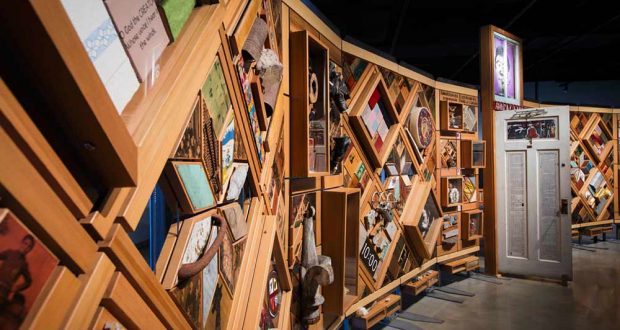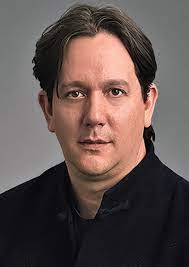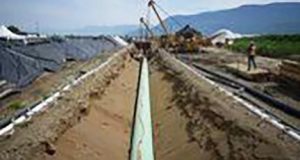By Rochelle Baker
Local Journalism Initiative Reporter
Art’s strength is rooted in the moment people connect with a truth rather than just know it.
Regardless of the medium, it is a catalyst for empathy and positive change, said multidisciplinary artist Carey Newman, recently appointed the inaugural Impact Chair of Indigenous Art Practices at the University of Victoria.
“It doesn’t approach issues explicitly,” said Newman, or Hayalthkin’geme, whose work explores Indigenous, social, and environmental concerns and their intersection with colonialism and capitalism.
“That’s where the power of art lies.
“It’s not the same as reading data in a scientific report. Art helps people realize the impacts of things on a fundamental or emotional level.”
For the last decade, the master carver, filmmaker and author of Kwakwak’awakw and Coast Salish descent has been delving into the meaning of reconciliation.
The process begins with learning and understanding truth, said Newman, whose most prominent and encompassing work to date is the Witness Blanket, a large-scale travelling cedar installation that suggests a patchwork quilt.
The piece was assembled from 800 donated objects or personal artifacts, many from survivors or their families, reclaimed from
residential schools and other institutions.
Symbolizing the protection, identity, ceremony and generosity Indigenous people derive from blankets, the artwork also sparked a documentary and book and is now being housed and restored at the Canadian Museum for Human Rights.
Braids of hair, crumbling bricks, photos, letters, a child’s shoe, doorknobs, merit badges and ice skates woven into the work bear witness to the atrocities children suffered at residential schools and reflect the ongoing process of reconciliation in Canada, said Newman.
“What is it that compels us to be ready, to make the sacrifices, or do the work to change?” he asked, noting the commonplace objects in the piece provoke viewers’ own memories.
“I think that the answer lies in (the moment) when we become emotionally attached to something. That connection point makes it personal.
“You’re not just thinking about this as something that happened to others. You’re considering it in the way that a parent would, asking, `What if that were my child?”’
Newman is also interested in analyzing our relationship with the land and the environment, shifting from notions of extraction and ownership to Indigenous values of stewardship and responsibility to future generations.
Earth Drums, a public artwork in Saanich on Vancouver Island, is a trio of large cedar box drums embedded in the ground that allow visitors to make music collectively.
But reverberations from the drums also register below the level of human hearing, resonating into the ground and creating a song for the Earth, Newman said.
The drums are adorned with images of a wolf, raven and a frog, which reflect a trio for concept groups representing the air, land and water, as well as elders, adults and youth who, in turn, have ties to the past, present, future.
“It’s also a reflection around the land back aspect of reconciliation,” Newman said.
“And how, for me, land back is not a conversation about property but a conversation about the collective perspective that we share around our responsibility towards the land, and how we live upon and interact with it and use the resources it provides.”
In his new role at UVic, Newman will be teaching, but he also aims to continue to explore how art can invoke decolonization and get people to examine their role in the process with two new projects.
The first is to develop a conceptual work titled The Seedling.
In addition to reshaping our relationship with the land, the project involves developing a sense of shared responsibility beyond the timelines typically used to plan for the future.
The artist plans to create a digital design for a cedar totem pole to be carved by other artisans centuries into the future after a sapling planted and cared for at the university reaches full maturity.
It sounds deceptively simple, he said.
“But it comes with a whole host of really interesting challenges,” Newman said.
“Which, if agreed upon, forces us to make a commitment to plan on a different timeline, not on four-year election cycles or fiscal year-ends.
“We have to make agreements that last longer than the people who make them.”
Newman also wants to create the unCentre for Arts and Decolonialization, to act as an interdisciplinary, collaborative and non-hierarchical forum that shifts the colonial mindset and explores new ways of approaching problems, projects or research.
“I want it to be developed with other artists, knowledge keepers and scholars,” Newman said.
“To form founding principles that are anti-oppressive, to kind of try to rethink the structure of an academic environment.”
In tapping a homeschooled artist whose experience and work are largely generated outside the formal academic framework as a research chair, UVic has laid the groundwork for decolonization and doing things differently, Newman said.
“I think that also includes thinking about or recognizing different ways that knowledge is carried and transferred and learned,” he said.
Everybody, regardless of their background, can examine how their individual behaviours uphold or support oppression or injustice, Newman added.
“And as we start to make the necessary changes in our perspective and the way we live, we can influence the process of decolonization.”
Rochelle Baker / Local Journalism Initiative / Canada’s National Observer
 Aboriginal Business Magazine Your source for Aboriginal Business News
Aboriginal Business Magazine Your source for Aboriginal Business News




